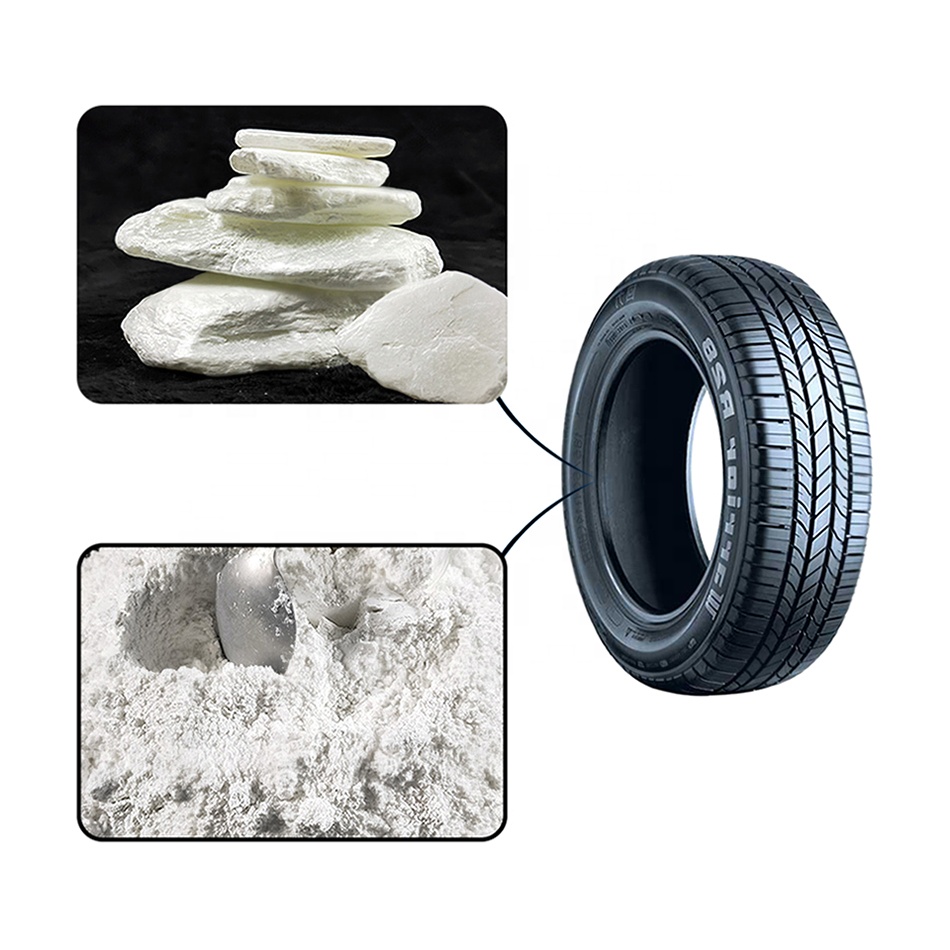1. Benefits of Rubber Grade Talc Powder
Improves Processing and Mold Release
One of the primary uses of Rubber Grade Talc Powder in rubber manufacturing is as a processing aid. Rubber compounds can be sticky and difficult to handle during production. Rubber Grade Talc Powder acts as an anti-tack agent, preventing rubber sheets or molded parts from sticking to equipment or each other. It also facilitates easier mold release, reducing defects in finished products.
Enhances Mechanical Properties
Rubber Grade Talc Powder can reinforce rubber compounds, improving tensile strength, tear resistance, and abrasion resistance. While not as strong as carbon black or silica, Rubber Grade Talc Powder provides moderate reinforcement, making it suitable for applications where flexibility and durability are needed without excessive stiffness.
Reduces Friction and Wear
Due to its lubricating properties, Rubber Grade Talc Powder reduces friction in rubber products, which is beneficial for applications like seals, gaskets, and conveyor belts. This helps extend the lifespan of rubber components by minimizing wear.
Acts as a Filler to Reduce Costs
Talcum powder is an economical filler that can partially replace more expensive materials like silica or carbon black. By incorporating Talcum powder, manufacturers can reduce production costs while maintaining acceptable performance characteristics.
Improves Heat Resistance
Talcum powder has good thermal stability, which can enhance the heat resistance of rubber products. This is particularly useful in automotive and industrial applications where rubber parts are exposed to high temperatures.
2. Common Applications of Talcum Powder in Rubber
Automotive Rubber Parts
Tires: Talcum powder is sometimes used in tire inner liners to improve air retention and reduce friction between layers.
Gaskets and Seals: Talcum powder helps in mold release and enhances durability.
Hoses: Provides flexibility and reduces surface tackiness.
Footwear and Sports Equipment
Shoe Soles: Talcum powder improves slip resistance and processing.
Rubber Mats and Gym Equipment: Enhances durability and reduces surface stickiness.
Industrial Rubber Products
Conveyor Belts: Talcum powder Reduces friction and wear.
Rubber Rollers:Talcum powder Improves smoothness and processing.
Medical and Consumer Rubber Goods
Rubber Gloves: Talcum powder Prevents sticking during manufacturing.
Elastic Bands: Talcum powder Enhances flexibility and reduces clumping.

3. Potential Drawbacks of Talc in Rubber
While talcum powder offers several advantages, there are some limitations:
Reduced Elasticity
Excessive talc powder in rubber can make rubber stiffer, reducing its elasticity. This may not be ideal for applications requiring high flexibility.
Lower Reinforcement Compared to Silica or Carbon Black
talc powder in rubber does not provide the same level of reinforcement as silica or carbon black, limiting its use in high-performance rubber products.
Potential Health Concerns
Inhalation of talc powder in rubber dust during processing can pose respiratory risks. Additionally, some talc sources may contain trace amounts of asbestos (though modern industrial talc powder in rubber is typically asbestos-free). Proper safety measures should be followed.
4. Conclusion
Talcum powder is indeed beneficial for rubber in many applications, offering advantages such as improved processing,cost reduction, and enhanced durability. However,its use must be carefully balanced to avoid negative effects on elasticity and performance. Manufacturers should consider the specific requirements of their rubber products when deciding whether to incorporate talc.
Overall, talc powder in rubber remains a useful additive in the rubber industry, particularly where cost efficiency, mold release,and moderate reinforcement are priorities.With proper handling and formulation, talc powder in rubber can significantly enhance the quality and manufacturability of rubber goods.

